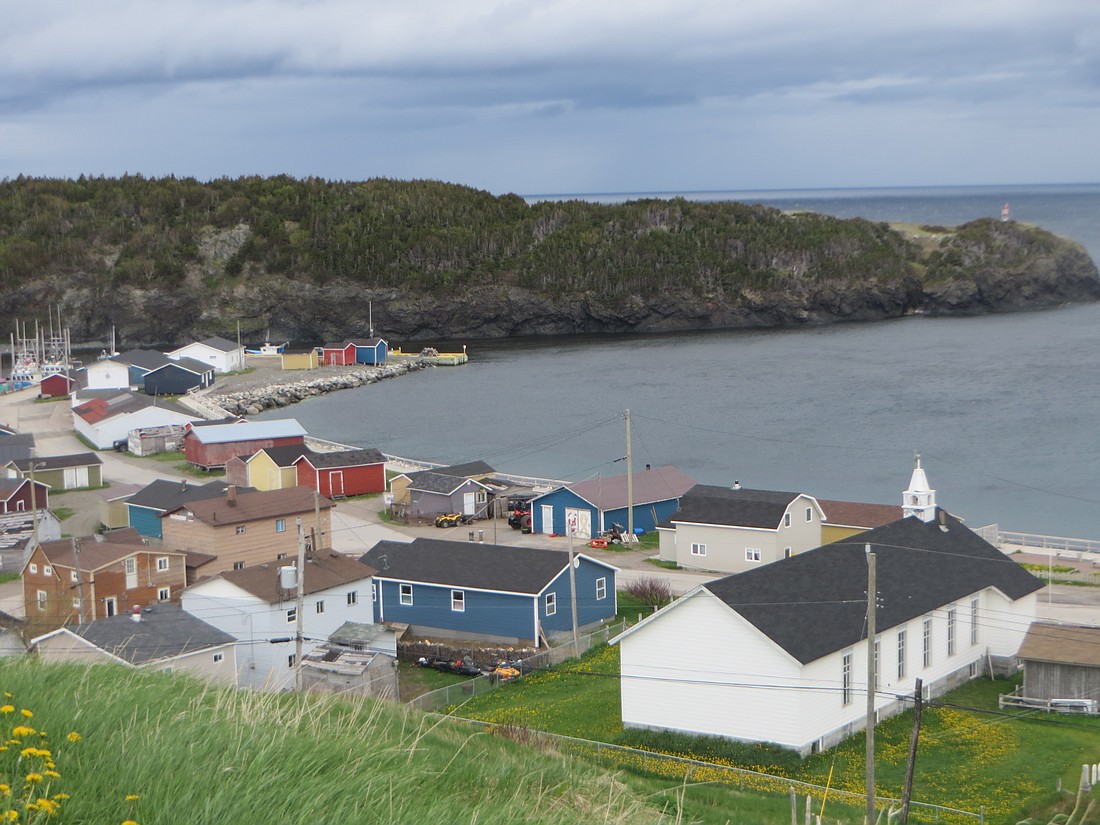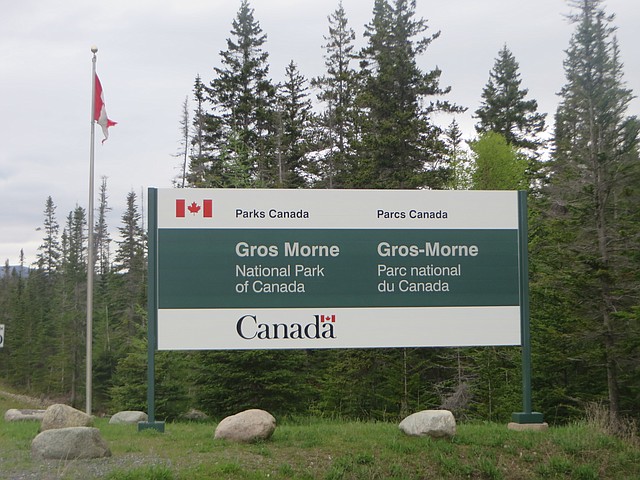Don't expect ordinary when you journey to the 'edge of the world'
July 25, 2016 at 6:00 a.m.
Kissing a codfish was never on my life’s to-do list. In fact, up until recently, I could honestly say it was not even in the realm of remote possibility. But, there I was at Skipper Hots Bar in Straitsview, Newfoundland, puckering up to smack a big one on this buggy-eyed cod. I had been talked into taking part in a “Screech In,” a ceremony that folks in this Canadian province like to conduct to make visitors feel at home. Newfoundlanders are well-known for their friendliness and hospitality and they definitely live up to this reputation, though their methods are unique!
At a “Screech In,” which is typically held at in a local watering hole, the master of ceremonies asks participants to don oversized fisherman garb, repeat various quirky Newfoundland expressions, smooch a cod, recite the Screechers’ Creed and down a shot of Screech Rum. The latter is a particular type of libation originating in Jamaica that long ago became a staple in this part of Canada. At the time, salt fish from Newfoundland was being shipped to the West Indies in exchange for rum. This resulted in fish becoming the national dish for Jamaicans and rum becoming the drink of choice for Newfoundlanders. The early fishermen tended to drink the beverage at full strength with no attempt to temper its taste. Story has it that the name “Screech” was coined when a visiting American WWII serviceman drank the rum in one toss. His howls of distress got the attention of a bystander who inquired as to the cause of this horrific screech, which prompted a Newfoundlander to reply, “The screech?” ‘Tis the rum, me son.” The name stuck and today this drink and its place in the province’s culture are legendary.
At the completion of a “Screech In,” participants are given a signed certificate acknowledging their new status as Honorary Newfoundlanders. This ritual is just one of many out-of-the-ordinary experiences visitors may have during a trip to “The Rock,” an affectionate term residents often use when referring to their home – a place that claims more rocks than soil.
Newfoundland, together with neighboring Labrador, make up Canada’s most easterly province. It’s a huge land mass that covers three times as much territory as Nova Scotia, New Brunswick and PEI. And if it were a U.S. state, it would rank fourth in regards to size, right behind Alaska, Texas and California. With a mere half a million residents, however, you’ll never encounter crowds or get into traffic jams when traveling through this vast terrain. Many regard Newfoundland as “the edge of the world,” as it is an off-the-beaten-path destination that takes some effort and time to reach. The rewards, however, are great for those who make the trek to this awe-inspiring region.
Known as an island of adventurers and adventures, Newfoundland boasts picturesque, unspoiled scenery and an incredibly diverse landscape. There’s everything from miles of rugged, windswept coastline and pristine waters with sheltered coves and inlets to dramatic mountain ranges, towering cliffs and stark moonscapes. The geology of Newfoundland stretches back to the beginnings of the earth itself. One of the best spots to see this evidence is Gros Morne National Park, a UNESCO World Heritage Site located on the western side of the province. Ranked as one of our planet’s most significant natural areas, Gros Morne contains rocks that were once part of an ancient ocean and later thrust up to form the Appalachian Mountains as two continents collided. Glaciers carved this place, creating its notable geological features and exposing the rock for scientific study, helping define and provide some of the world’s best illustrations of plate tectonic theory.








